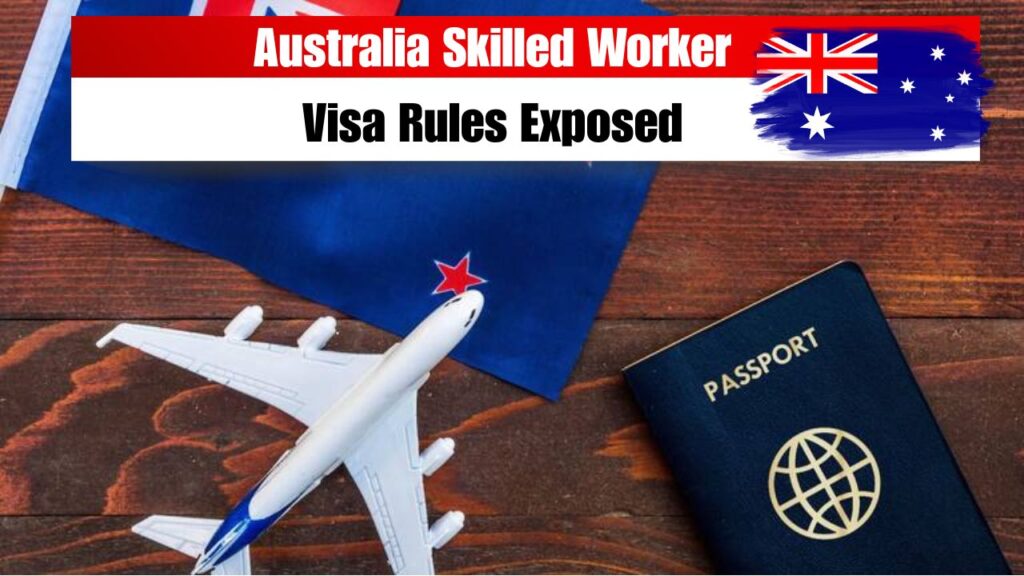Australia Skilled Worker Visa 2025 – The Australia Skilled Worker Visa 2025 program has undergone significant changes, sparking interest and concern among potential applicants. With the Australian government introducing new eligibility rules and revising the application process, understanding these updates is critical for skilled migrants. Whether you’re an IT professional, a healthcare worker, or a tradesperson looking to move Down Under, the latest visa criteria and hidden pathways could be the key to your successful migration. This guide reveals all the must-know updates, step-by-step processes, and insider tips to help you navigate Australia’s skilled visa system in 2025.

New Eligibility Rules for Australian Skilled Migration
The 2025 update to the Skilled Worker Visa program has introduced stricter yet more streamlined eligibility rules. Applicants targeting permanent residency in Australia now face a revised points-based system that prioritizes critical skill shortages, English language proficiency, and regional job placements. The Australian government aims to boost economic recovery by attracting highly qualified professionals in sectors like healthcare, construction, education, and tech. Additionally, applicants must now submit an Expression of Interest (EOI) through SkillSelect, showcasing qualifications, work experience, and job offers if any. Those applying under subclass 189, 190, or 491 should carefully review the updated occupation lists, as they have been trimmed to match current Australian workforce demands.
Australia PR Visa 2025: Pathway for International Skilled Workers
Securing Permanent Residency (PR) through Australia’s skilled migration program in 2025 has become both competitive and opportunity-rich. International workers aiming for PR need to understand that states and territories across Australia are now more involved in nominating applicants. The Canberra government, for instance, favors skilled migrants willing to work in regional or low-population areas. Candidates must earn at least 65 points under the General Skilled Migration (GSM) points test, with higher scores increasing the chance of invitation. Factors such as age, education, English language skills, and relevant experience significantly affect the total points. Priority is also being given to sectors with critical shortages, making it essential to align your occupation with the current demand list.
| Visa Type | Subclass | Points Required | Processing Time |
|---|---|---|---|
| Skilled Independent | 189 | 65+ | 5–9 months |
| State Nominated | 190 | 65+ | 6–10 months |
| Regional Provisional | 491 | 65+ | 7–11 months |
| Employer Sponsored | 186 | Nomination based | 5–8 months |
| Temporary Skill Shortage | 482 | Job offer required | 4–6 months |
Hidden Opportunities for Migrants Across Australia
While most applicants focus on major cities, 2025 opens up hidden skilled worker opportunities in regional Australia. Rural and remote areas are experiencing a labor shortage in key industries like agriculture, aged care, mining, and hospitality. Australians in regional areas welcome skilled migrants who are ready to commit to community development and long-term settlement. The government offers additional points for regional nomination and faster PR processing for applicants choosing to work in these zones. Moreover, certain occupations that are not eligible in metro zones are now being prioritized in remote regions. This makes exploring regional sponsorships a strategic move for applicants wanting quicker results and better visa success rates in Australia.
Step-by-Step Skilled Visa Application Process in Australia
For anyone planning to apply for a skilled worker visa in Australia, understanding the 2025 step-by-step process is vital. Start by checking the skilled occupation list and ensure your job is in demand. Next, take a recognized English test (IELTS, PTE, TOEFL), and complete a skills assessment from an authorized body. Then, submit your Expression of Interest (EOI) through SkillSelect and wait for an invitation to apply. If nominated by a state or employer, provide the required documentation and apply within the specified timeframe. Australians are known for valuing efficiency, so ensure all your information is accurate, up-to-date, and well-supported to avoid unnecessary delays.
Frequently Asked Questions (FAQs)
1. What is the minimum score for skilled migration to Australia?
You must score at least 65 points on the General Skilled Migration (GSM) test.
2. Can I apply for a skilled visa without a job offer?
Yes, subclasses 189 and 190 do not require a job offer but need a strong skills profile.
3. Is there any benefit to applying for regional sponsorship?
Yes, regional applicants may get extra points and faster processing times.
4. Which occupations are in demand for Australia’s skilled visa?
Healthcare, IT, engineering, teaching, and construction are top in-demand sectors.




